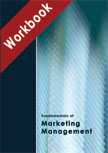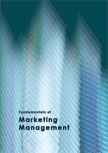|
<< Previous
Background Note Contd...
|
Internationally it was packaged in silver and blue cans that pictured two red bulls fighting in Buddhist-inspired colours. The concoction was marketed to young people as an energy booster, using sassy advertising spots and the catchphrase "Red Bull gives you wings." Since introducing Red Bull in 1987, Mateschitz had invested heavily in building the brand. In 2004 he spent $600 million, or 30% of revenue, on marketing. (Coca-Cola spent 9%.). But Red Bull spent relatively little on traditional print and TV advertising, instead relying on sponsorships of extreme sports or giving away samples at local events. The company's nontraditional approach to marketing seemed to have paid off.
|
|
According to Hoover's Inc., an information database of the world's top businesses, it captured about 70 percent of the worldwide energy drink market. Forbes magazine welcomed the beverage mogul to its billionaires' list in 2003.
Unlike rivals who paid millions of dollars for superstars like Britney Spears, Mateschitz relied on cheaper talent: hip youngsters, students and a legion of fringe athletes. Red Bull sponsored some 500 athletes around the world, the type who would surf in Nova Scotia in January or jump out of a plane to "fly" across the English Channel. Every year the company staged dozens of extreme sporting events, like the climbing of iced-down silos in Iowa or kite sailing in Hawaii, as well as cultural events like break-dancing contests and rock music jam sessions.
|
|
Mateschitz had erected Hangar-7, an eye-popping structure of glass and steel next to the airport in Salzburg, Austria. The building served as a chic eatery for club crawlers and provided shelter for the Flying Bulls, a fleet of 15 show planes that appeared at air shows around the world.
More recently, Mateschitz had purchased a Formula One racing team, which would absorb $100 million a year to keep on the track while generating only $70 million in revenue. All these activities were geared to one objective: to expand Red Bull's presence amid a deluge of new energy drinks being introduced by upstarts and beverage behemoths like Pepsi and Coke... |
Excerpts >>
|
|



